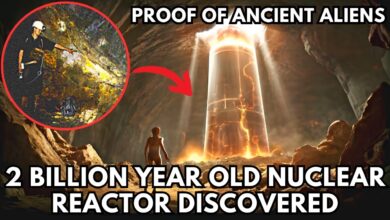Parker Solar Probe’s Hidden Images CONFIRMS what WE ALL FEARED
We’ve been told we understand the Sun. That we’ve mapped its storms, modeled its cycles, and captured its fury from a safe distance with telescopes. But what if everything we thought we knew was just a thin layer over a deeper, stranger truth? A truth now staring back at us in the final images of a spacecraft that dared the unthinkable: touch the Sun.
This is not just another space mission. This is humanity sending a probe into the heart of fire, and what it found may rewrite everything we know about our star.
A Mission Beyond Belief
The Parker Solar Probe wasn’t supposed to exist—not with today’s technology, not within human limits. But the dream began decades ago, sparked by physicist Eugene Parker, who asked a simple question in the 1950s: Could the Sun be hurling invisible particles across the solar system?
Decades later, the probe was launched to answer that question. It would fly closer to the Sun than anything ever dared, through regions no spacecraft should survive. At its closest approach, just five solar diameters from the Sun’s surface, it reached speeds of 430,000 mph—fast enough to cross the United States in just 20 seconds.
Velocity was not the goal. Discovery was.
The Sun Isn’t What We Thought
For centuries, the Sun was taught as a predictable fusion reactor. Its surface—the hottest part, we believed—controlled everything. But Parker shattered this illusion.
As it pierced the corona, the Sun’s outer atmosphere visible only during total eclipses, the probe encountered a physical paradox. The corona is millions of degrees hotter than the Sun’s surface, yet composed of thin, almost ghostly plasma. How can something so diffuse be so violently hot? Conventional physics offers no explanation.
Even more unsettling: these superheated particles escape into space, bombarding Earth and the planets. The solar wind Parker theorized decades ago wasn’t just real—it was chaotic, violent, and unpredictable, capable of disrupting satellites, power grids, and even global security.
A Shield Against Oblivion
How do you send a machine into a furnace that could melt steel in seconds without it disintegrating? Parker engineers had a bold solution: a carbon-composite heat shield. Not some exotic alloy—carbon, with the highest known melting point, angled perfectly to protect delicate instruments from not just heat, but radiation.
Behind this shield, sensors measured magnetic fields, particle flows, and energy signatures—data that would reveal phenomena no solar model could explain.
Patterns in the Chaos
The probe returned images and readings that stunned scientists:
-
Jagged, twisting magnetic filaments in the corona.
-
Sudden energy bursts with no known origin.
-
Structured patterns in the solar wind, as if something intelligent was organizing the chaos.
These weren’t random motions. The rhythm, repetition, and timing of solar particles suggested order inside the turbulence, resembling algorithms or coded systems. Could the Sun, in its extreme regions, be behaving almost like a living entity?
The Sun’s Internal Clock
Telemetry revealed something even stranger: the frequency of solar particle waves aligned with magnetic field reversals and flare activity, as if the Sun had its own hidden clockwork. For the first time, some researchers whispered about solar cognition, not metaphorically, but as a possible emergent property of plasma dynamics on a cosmic scale.
The Sun’s latest cycle is accelerating faster than expected, with violent flares, unpredictable sunspots, and potentially early magnetic pole flips. The implication: a solar storm could surpass anything in recorded history, including the Carrington Event of 1859, which fried telegraph lines. Today, a similar storm could cripple global communication, GPS, and power grids.
A Message Hidden in Fire
Among Parker’s instruments lies a seemingly human touch: a memory card containing a photo of Eugene Parker, the names of 1.1 million Earth citizens, and his 1958 paper. Exposed but surviving the Sun’s fury, the card feels less like archival data and more like a message in a bottle, sent to whisper truths back from the inferno.
Scientists have noted subtle electromagnetic changes in the card that defy explanation. Could the Sun have responded?
When the Sun Looks Back
In one final, breathtaking encounter, sensors recorded the solar wind converging toward the probe for 48 seconds, as if the Sun itself had become aware of its visitor. Then, as suddenly, the pattern dissolved. Privately, mission scientists call it “the eye”—a fleeting moment when the Sun appeared to acknowledge humanity.
Parker’s journey isn’t over. Each orbit brings it closer, peeling back layers of the Sun’s most ancient power. What happens when observation becomes interaction? When curiosity meets a force older, more powerful, and stranger than we ever imagined?
The Sun as We Never Knew It
The Parker Solar Probe didn’t just survive the Sun—it changed our understanding of it. Not a passive ball of hydrogen, but a dynamic, unpredictable, possibly intelligent system, hiding secrets we’re only beginning to glimpse.
From impossible heat in the corona, to structured pulses, to a probe that may have been “noticed” by the Sun itself, Parker challenges everything we thought we knew.
And the question remains: If the Sun can respond, what else in the universe might be alive, aware, and watching us?




